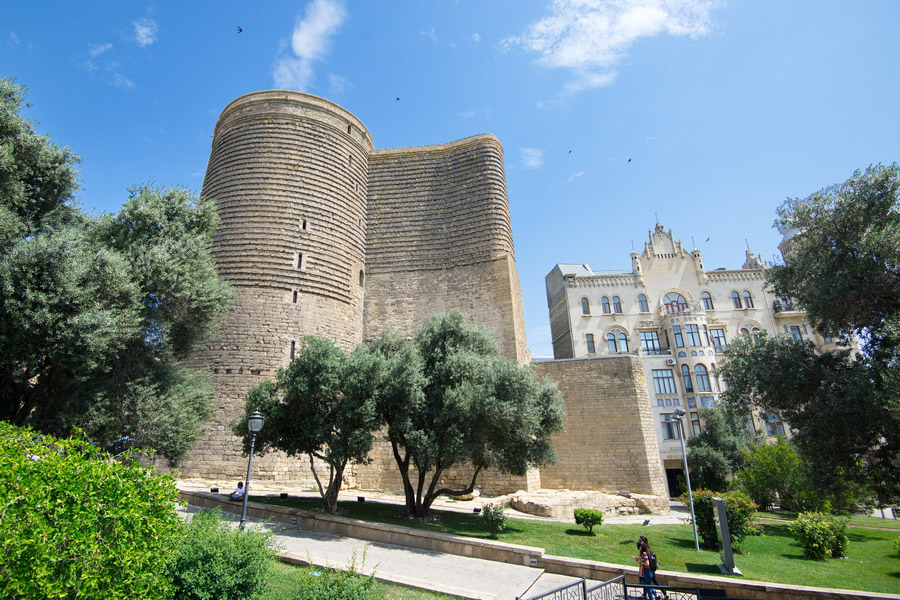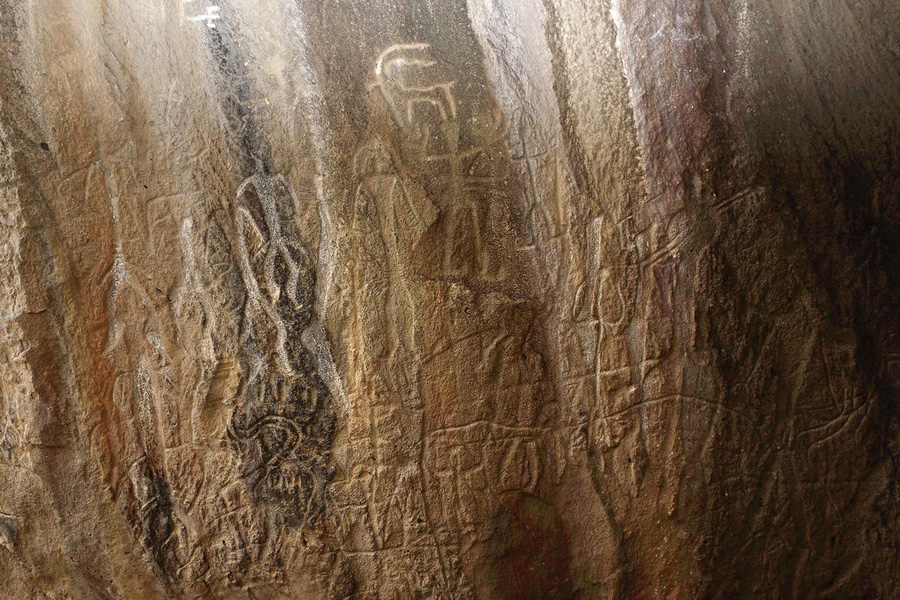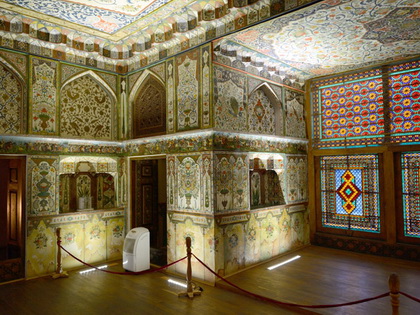UNESCO World Heritage Sites in Azerbaijan

Azerbaijan and UNESCO
Azerbaijan has been a UNESCO member since 1993, but its first World Heritage Site was not added to the list until 2000. Today, Azerbaijan actively collaborates with UNESCO, conducting scientific and historical research. For instance, in 2005, Baku hosted an international scientific conference titled "UNESCO-Azerbaijan: Bridge to the Future.
Currently, five sites from Azerbaijan are inscribed on the UNESCO World Heritage List, 11 sites are on the tentative list, and 23 sites are included in the Representative List of the Intangible Cultural Heritage of Humanity.
UNESCO World Heritage Sites in Azerbaijan
Five sites from Azerbaijan have been inscribed on the UNESCO World Heritage List:
- Walled City of Baku with the Shirvanshah Palace and Maiden Tower (included in 2000);
- Gobustan Rock Art Cultural Landscape (inscribed in 2007);
- Sheki Historic Center with the Khan's Palace (included in 2019);
- Cultural Landscape of Khinalug People and “Köç Yolu” Transhumance Route (included in 2023);
- Hyrcanian Forests (since 2023).
Walled City of Baku with the Shirvanshah Palace and Maiden Tower

These attractions are situated in the heart of Azerbaijan's capital. The architecture and culture showcase evidence of Zoroastrian, Sassanid, Arabic, Persian, Shirvan, Ottoman, and Russian influences. For instance, the city center, with its defensive walls and twelfth-century tower, was constructed atop structures dating back to the seventh and sixth centuries B.C. Additionally, the 15th-century Shirvanshahs' Palace is considered one of Azerbaijan's main attractions. Regrettably, only 16 of the 25 rooms in the palace's upper part have survived, as the remaining sections were dismantled by locals who used the stones to build their own houses. The palace was partially destroyed in the mid-17th century, and its walls were damaged during the siege of Baku by Peter I's troops. In the 19th century, the palace served as a storehouse. Preservation efforts for the palace only began in the early 20th century. In contrast, the 12th-century Maiden Tower has been well-preserved. Serving as a lighthouse during the 18th and 19th centuries, the 28-meter-high tower has undergone several restorations.
Gobustan Rock Art Cultural Landscape

Gobustan, situated near Baku, is a state historical and artistic reserve. Over 6,000 rock paintings dating back at least 40,000 years have been discovered here. These petroglyphs depict hunting scenes, animals, plants, and schematic representations of people. Studying these petroglyphs can reveal the evolution of humanity. For instance, early drawings feature hunting and fishing, while later ones showcase people gathered around fires, domestic scenes, and domesticated animals. Notably, female hosts are portrayed as plump and female warriors as slender. The renowned Norwegian explorer and archaeologist Thor Heyerdahl is known to have studied the rock paintings of boats found here. Remnants of primitive camps and burial sites are also present. Although the oldest artifacts date back to the Mesolithic period, scientists believe that the area was inhabited even earlier. When visiting this World Heritage Site, you can also explore the nearby mud volcanoes, located just 15-20 minutes away.
Sheki Historic Center with the Khan's Palace

The ancient city of Sheki, founded in the eighth century B.C., has been influenced by various cultural traditions over the centuries, including Safavid, Ottoman, and Russian. As a result, the city is filled with oriental buildings and Russian merchant houses. Interestingly, scholars believe that Christianity existed in the area as early as the first century. The most famous attraction is the Khan's Palace, which is well-preserved and fascinating to explore. The palace features two mirrored balconies and six rooms. Each room boasts unique decorations, always in vibrant colors. Not only are the walls and ceilings of the rooms adorned, but the facade of the building is also embellished. The windows are made of stained glass, with each square meter of windows consisting of 5,000 fragments. Additionally, there are rumors that the palace was constructed without using a single nail.
Cultural Landscape of People of Khinalug and “Köç Yolu” Transhumance Route

The village of Khinalug, perched high in Azerbaijan's northern region, along with its surrounding pastures, forms a unique cultural landscape. Here, there's a traditional practice of migrating cattle over a 200-kilometer distance seasonally between winter and summer pastures at varying altitudes. The winter pastures lie in the lowland plains, while the summer ones are nestled high in the mountains. This practice of moving cattle up and down the mountains is known as vertical migration. Additionally, Khinalug boasts an entire infrastructure designed to cope with the challenging weather conditions during these migrations, including mosques, mausoleums, parking areas, and even temporary grazing fields.
Hyrcanian Forests
In 2023, Iran's UNESCO-listed Hyrcanian Forests, recognized since 2019, saw an expansion with the addition of new sites located in Azerbaijan. These new areas, Dangyaband and Istisuchai Valley, are known for their ancient forests surrounding the Caspian Sea. The Hyrcanian Forests are a unique ecosystem, notable for their well-preserved distinctiveness.
- Ateshgah Temple (included in 1998) - Located in Surakhani, the temple was built in the 17th-18th centuries on the site of the so-called "eternal fire" fed by natural gas. Fire worshippers were drawn to this place and began to pray here, honoring all four elements: fire, air, water, and earth.
- Mausoleums in Nakhichevan (included in 1998) - The main mausoleum, built in 1162 with a unique architectural style, houses Yusuf Kuseyir's remains. Nearby in the village of Karabaglar lies another monastery adorned with plain and glazed bricks.
- Hirkan National Park (included in 1998) - This region has a humid subtropical climate, and the park's primary purpose is to protect the unique landscape and preserve rare and relict plant species listed in the Red Book.
- "Binegadi" 4th Period Fauna and Flora Deposit (included in 1998) - This ancient deposit is situated in modern-day Baku. Due to this natural monument, scientists discovered a large fresh water source and the remains of several dozen species of mammals, birds, reptiles, and plants.
- Mud Volcano Lokbatan (included in 1998) - One of the largest mud volcanoes in the world, Lokbatan has had numerous eruptions but lacks any gryphons from which mud would emerge.
- Baku Tier Mountain (included in 1998) - Paleontological remains have been found beneath this mountain, generating significant interest among archaeologists and historians.
- The Caspian Shore Defensive Constructions (included in 2001) - Constructed to prevent foreign raids, several castles and towers have survived to this day. The most intriguing is the Chirah-Kala, built in the 5th-6th centuries.
- Shusha Historical and Architectural Reserve (included in 2001) - This reserve contains preserved caravanserais, mosques, and madrasahs from the 18th and 19th centuries.
- The historical town of Ordubad (included in 2001) - Established no later than the 7th century, the city retains its old layout and historic buildings, including residences, administrative structures, and mosques.
- Khudaferin bridges and related structures (included in 2021) - The two bridges from the 12th-13th centuries are valuable examples of early medieval Azerbaijani construction.
- Prehistoric sites of Azikh and Taglar caves (included in 2021) - Researchers have discovered hominid remains over a million years old, along with early tools, ancient animal bones, and what is believed to be the first fireplace in human history, dating back 700,000-500,000 years, within these caves.
Azerbaijan boasts a wealth of unique sites that represent humanity's heritage, which every visitor should experience. The Old Fortress of Baku, the cultural landscape of Gobustan petroglyphs, and the historic center of Sheki are sure to captivate history and travel enthusiasts alike. Additionally, the locations on UNESCO's tentative list are well worth exploring. We recommend visiting the Temple of Fire Worshippers, the Lokbatan mud volcano, the Khinalig village, and the Khudaferin bridges.
Discover more about the intangible UNESCO World Heritage Sites in Azerbaijan.


